- Home
- Alice Walker
In Search of Our Mothers' Gardens Page 5
In Search of Our Mothers' Gardens Read online
Page 5
Whenever I visit antebellum homes in the South, with their spacious rooms, their grand staircases, their shaded back windows that, without the thickly planted trees, would look out onto the now vanished slave quarters in the back, this is invariably my thought. I stand in the backyard gazing up at the windows, then stand at the windows inside looking down into the backyard, and between the me that is on the ground and the me that is at the windows, History is caught.
O’Connor attended local Catholic schools and then Georgia Women’s College. In 1945 she received a fellowship to the Writer’s Workshop at the University of Iowa. She received her M.A. in 1947. While still a student she wrote stories that caused her to be recognized as a writer of formidable talent and integrity of craft. After a stay at Yaddo, the artists’ colony in upstate New York, she moved to a furnished room in New York City. Later she lived and wrote over a garage at the Connecticut home of Sally and Robert Fitzgerald, who became, after her death, her literary executors.
Although, as Robert Fitzgerald states in the preface to O’Connor’s Everything That Rises Must Converge, “Flannery was out to be a writer on her own and had no plans to go back to live in Georgia,” staying out of Georgia for good was not possible. In December of 1950 she experienced a peculiar heaviness in her “typing arms.” On the train home for the Christmas holidays she became so ill she was hospitalized immediately. It was disseminated lupus. In the fall of 1951, after nine wretched months in the hospital, she returned to Milledgeville. Because she could not climb the stairs at the Cline house her mother brought her to their country house, Andalusia, about five miles from town. Flannery O’Connor lived there with her mother for the next thirteen years. The rest of her life.
The word lupus is Latin for “wolf,” and is described as “that which eats into the substance.” It is a painful, wasting disease, and O’Connor suffered not only from the disease—which caused her muscles to weaken and her body to swell, among other things—but from the medicine she was given to fight the disease, which caused her hair to fall out and her hipbones to melt. Still, she managed—with the aid of crutches from 1955 on—to get about and to write, and left behind more than three dozen superb short stories, most of them prizewinners, two novels, and a dozen or so brilliant essays and speeches. Her book of essays, Mystery and Manners, which is primarily concerned with the moral imperatives of the serious writer of fiction, is the best of its kind I have ever read.
“When you make these trips back south,” says my mother, as I give the smiling waitress my credit card, “just what is it exactly that you’re looking for?”
“A wholeness,” I reply.
“You look whole enough to me,” she says.
“No,” I answer, “because everything around me is split up, deliberately split up. History split up, literature split up, and people are split up too. It makes people do ignorant things. For example, one day I was invited to speak at a gathering of Mississippi librarians and before I could get started, one of the authorities on Mississippi history and literature got up and said she really did think Southerners wrote so well because ‘we’ lost the war. She was white, of course, but half the librarians in the room were black.”
“I bet she was real old,” says my mother. “They’re the only ones still worrying over that war.”
“So I got up and said no, ‘we’ didn’t lose the war. ‘You all’ lost the war. And you all’s loss was our gain.”
“Those old ones will just have to die out,” says my mother.
“Well,” I say, “I believe that the truth about any subject only comes when all the sides of the story are put together, and all their different meanings make one new one. Each writer writes the missing parts to the other writer’s story. And the whole story is what I’m after.”
“Well, I doubt if you can ever get the true missing parts of anything away from the white folks,” my mother says softly, so as not to offend the waitress who is mopping up a nearby table; “they’ve sat on the truth so long by now they’ve mashed the life out of it.”
“O’Connor wrote a story once called ‘Everything That Rises Must Converge.’”
“What?”
“Everything that goes up comes together, meets, becomes one thing. Briefly, the story is this: an old white woman in her fifties—”
“That’s not old! I’m older than that, and I’m not old!”
“Sorry. This middle-aged woman gets on a bus with her son, who likes to think he is a Southern liberal… he looks for a black person to sit next to. This horrifies his mother, who, though not old, has old ways. She is wearing a very hideous, very expensive hat, which is purple and green.”
“Purple and green?”
“Very expensive. Smart. Bought at the best store in town. She says, ‘With a hat like this, I won’t meet myself coming and going.’ But in fact, soon a large black woman, whom O’Connor describes as looking something like a gorilla, gets on the bus with a little boy, and she is wearing this same green-and-purple hat. Well, our not-so-young white lady is horrified, outdone.”
“I bet she was. Black folks have money to buy foolish things with too, now.”
“O’Connor’s point exactly! Everything that rises, must converge.”
“Well, the green-and-purple-hats people will have to converge without me.”
“O’Connor thought that the South, as it became more ‘progressive,’ would become just like the North. Culturally bland, physically ravished, and, where the people are concerned, well, you wouldn’t be able to tell one racial group from another. Everybody would want the same things, like the same things, and everybody would be reduced to wearing, symbolically, the same green-and-purple hats.”
“And do you think this is happening?”
“I do. But that is not the whole point of the story. The white woman, in an attempt to save her pride, chooses to treat the incident of the identical hats as a case of monkey-see, monkey-do. She assumes she is not the monkey, of course. She ignores the idiotic-looking black woman and begins instead to flirt with the woman’s son, who is small and black and cute. She fails to notice that the black woman is glowering at her. When they all get off the bus she offers the little boy a ‘bright new penny.’ And the child’s mother knocks the hell out of her with her pocketbook.”
“I bet she carried a large one.”
“Large, and full of hard objects.”
“Then what happened? Didn’t you say the white woman’s son was with her?”
“He had tried to warn his mother. ‘These new Negroes are not like the old,’ he told her. But she never listened. He thought he hated his mother until he saw her on the ground, then he felt sorry for her. But when he tried to help her, she didn’t know him. She’d retreated in her mind to a historical time more congenial to her desires. ‘Tell Grandpapa to come get me,’ she says. Then she totters off, alone, into the night.”
“Poor thing,” my mother says sympathetically of this horrid woman, in a total identification that is so Southern and so black.
“That’s what her son felt, too, and that is how you know it is a Flannery O’Connor story. The son has been changed by his mother’s experience. He understands that, though she is a silly woman who has tried to live in the past, she is also a pathetic creature and so is he. But it is too late to tell her about this because she is stone crazy.”
“What did the black woman do after she knocked the white woman down and walked away?”
“O’Connor chose not to say, and that is why, although this is a good story, it is, to me, only half a story. You might know the other half….”
“Well, I’m not a writer, but there was an old white woman I once wanted to strike …” she begins.
“Exactly,” I say.
I discovered O’Connor when I was in college in the North and took a course in Southern writers and the South. The perfection of her writing was so dazzling I never noticed that no black Southern writers were taught. The other writers we studied—Faulkner, McCullers, Wel
ty—seemed obsessed with a racial past that would not let them go. They seemed to beg the question of their characters’ humanity on every page. O’Connor’s characters—whose humanity if not their sanity is taken for granted, and who are miserable, ugly, narrow-minded, atheistic, and of intense racial smugness and arrogance, with not a graceful, pretty one anywhere who is not, at the same time, a joke—shocked and delighted me.
It was for her description of Southern white women that I appreciated her work at first, because when she set her pen to them not a whiff of magnolia hovered in the air (and the tree itself might never have been planted), and yes, I could say, yes, these white folks without the magnolia (who are indifferent to the tree’s existence), and these black folks without melons and superior racial patience, these are like Southerners that I know.
She was for me the first great modern writer from the South, and was, in any case, the only one I had read who wrote such sly, demythifying sentences about white women as: “The woman would be more or less pretty—yellow hair, fat ankles, muddy-colored eyes.”
Her white male characters do not fare any better—all of them misfits, thieves, deformed madmen, idiot children, illiterates, and murderers, and her black characters, male and female, appear equally shallow, demented, and absurd. That she retained a certain distance (only, however, in her later, mature work) from the inner workings of her black characters seems to me all to her credit, since, by deliberately limiting her treatment of them to cover their observable demeanor and actions, she leaves them free, in the reader’s imagination, to inhabit another landscape, another life, than the one she creates for them. This is a kind of grace many writers do not have when dealing with representatives of an oppressed people within a story, and their insistence on knowing everything, on being God, in fact, has burdened us with more stereotypes than we can ever hope to shed.
In her life, O’Connor was more casual. In a letter to her friend Robert Fitzgerald in the mid-fifties she wrote, “as the niggers say, I have the misery.” He found nothing offensive, apparently, in including this unflattering (to O’Connor) statement in his Introduction to one of her books. O’Connor was then certain she was dying, and was in pain; one assumes she made this comment in an attempt at levity. Even so, I do not find it funny. In another letter she wrote shortly before she died she said: “Justice is justice and should not be appealed to along racial lines. The problem is not abstract for the Southerner, it’s concrete: he sees it in terms of persons, not races—which way of seeing does away with easy answers.” Of course this observation, though grand, does not apply to the racist treatment of blacks by whites in the South, and O’Connor should have added that she spoke only for herself.
But essential O’Connor is not about race at all, which is why it is so refreshing, coming, as it does, out of such a racial culture. If it can be said to be “about” anything, then it is “about” prophets and prophecy, “about” revelation, and “about” the impact of supernatural grace on human beings who don’t have a chance of spiritual growth without it.
An indication that she believed in justice for the individual (if only in the corrected portrayal of a character she invented) is shown by her endless reworking of “The Geranium,” the first story she published (in 1946), when she was twenty-one. She revised the story several times, renamed it at least twice, until, nearly twenty years after she’d originally published it (and significantly, I think, after the beginning of the Civil Rights Movement), it became a different tale. Her two main black characters, a man and a woman, underwent complete metamorphosis.
In the original story, Old Dudley, a senile racist from the South, lives with his daughter in a New York City building that has “niggers” living in it too. The black characters are described as being passive, self-effacing people. The black woman sits quietly, hands folded, in her apartment; the man, her husband, helps Old Dudley up the stairs when the old man is out of breath, and chats with him kindly, if condescendingly, about guns and hunting. But in the final version of the story, the woman walks around Old Dudley (now called Tanner) as if he’s an open bag of garbage, scowls whenever she sees him, and “didn’t look like any kind of woman, black or white, he had ever seen.” Her husband, whom Old Dudley persists in calling “Preacher” (under the misguided assumption that to all black men it is a courtesy title), twice knocks the old man down. At the end of the story he stuffs Old Dudley’s head, arms, and legs through the banisters of the stairway “as if in a stockade,” and leaves him to die. The story’s final title is “Judgment Day.”
The quality added is rage, and, in this instance, O’Connor waited until she saw it exhibited by black people before she recorded it.
She was an artist who thought she might die young, and who then knew for certain she would. Her view of her characters pierces right through to the skull. Whatever her characters’ color or social position she saw them as she saw herself, in the light of imminent mortality. Some of her stories, “The Enduring Chill” and “The Comforts of Home” especially, seem to be written out of the despair that must, on occasion, have come from this bleak vision, but it is for her humor that she is most enjoyed and remembered. My favorites are these:
Everywhere I go I’m asked if I think the universities stifle writers. My opinion is that they don’t stifle enough of them. There’s many a best-seller that could have been prevented by a good teacher.
—Mystery and Manners
“She would of been a good woman, if it had been somebody there to shoot her every minute of her life.”
—“The Misfit,” A Good Man is Hard to Find
There are certain cases in which, if you can only learn to write poorly enough, you can make a great deal of money.
—Mystery and Manners
It is the business of fiction to embody mystery through manners, and mystery is a great embarrassment to the modern mind.
—Mystery and Manners
It mattered to her that she was a Catholic. This comes as a surprise to those who first read her work as that of an atheist. She believed in all the mysteries of her faith. And yet, she was incapable of writing dogmatic or formulaic stories. No religious tracts, nothing haloed softly in celestial light, not even any happy endings. It has puzzled some of her readers and annoyed the Catholic church that in her stories not only does good not triumph, it is not usually present. Seldom are there choices, and God never intervenes to help anyone win. To O’Connor, in fact, Jesus was God, and he won only by losing. She perceived that not much has been learned by his death by crucifixion, and that it is only by his continual, repeated dying—touching one’s own life in a direct, searing way—that the meaning of that original loss is pressed into the heart of the individual.
In “The Displaced Person,” a story published in 1954, a refugee from Poland is hired to work on a woman’s dairy farm. Although he speaks in apparent gibberish, he is a perfect worker. He works so assiduously the woman begins to prosper beyond her greatest hopes. Still, because his ways are not her own (the Displaced Person attempts to get one of the black dairy workers to marry his niece by “buying” her out of a Polish concentration camp), the woman allows a runaway tractor to roll over and kill him.
“As far as I’m concerned,” she tells the priest, “Christ was just another D.P.” He just didn’t fit in. After the death of the Polish refugee, however, she understands her complicity in a modern crucifixion, and recognizes the enormity of her responsibility for other human beings. The impact of this new awareness debilitates her; she loses her health, her farm, even her ability to speak.
This moment of revelation, when the individual comes face to face with her own limitations and comprehends “the true frontiers of her own inner country,” is classic O’Connor, and always arrives in times of extreme crisis and loss.
There is a resistance by some to read O’Connor because she is “too difficult,” or because they do not share her religious “persuasion.” A young man who studied O’Connor under the direction of E
udora Welty some years ago amused me with the following story, which may or may not be true:
“I don't think Welty and O’Connor understood each other,” he said, when I asked if he thought O’Connor would have liked or understood Welty’s more conventional art. “For Welty’s part, wherever we reached a particularly dense and symbolic section of one of O’Connor’s stories she would sigh and ask, ‘Is there a Catholic in the class?’”
Whether one “understands” her stories or not, one knows her characters are new and wondrous creations in the world and that not one of her stories—not even the earliest ones in which her consciousness of racial matters had not evolved sufficiently to be interesting or to differ much from the insulting and ignorant racial stereotyping that preceded it—could have been written by anyone else. As one can tell a Bearden from a Keene or a Picasso from a Hallmark card, one can tell an O’Connor story from any story laid next to it. Her Catholicism did not in any way limit (by defining it) her art. After her great stories of sin, damnation, prophecy, and revelation, the stories one reads casually in the average magazine seem to be about love and roast beef.
Andalusia is a large white house at the top of a hill with a view of a lake from its screened-in front porch. It is neatly kept, and there are, indeed, peacocks strutting about in the sun. Behind it there is an unpainted house where black people must have lived. It was, then, the typical middle-to-upper-class arrangement: white folks up front, the “help,” in a far shabbier house, within calling distance from the back door. Although an acquaintance of O’Connor’s has told me no one lives there now—but that a caretaker looks after things—I go up to the porch and knock. It is not an entirely empty or symbolic gesture: I have come to this vacant house to learn something about myself in relation to Flannery O’Connor, and will learn it whether anyone is home or not.

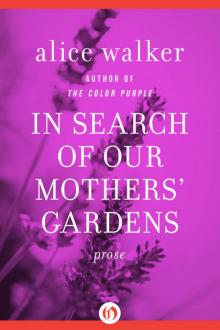 In Search of Our Mothers' Gardens: Prose
In Search of Our Mothers' Gardens: Prose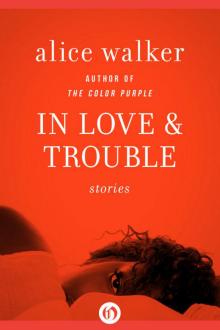 In Love and Trouble: Stories of Black Women: Stories of Black Women
In Love and Trouble: Stories of Black Women: Stories of Black Women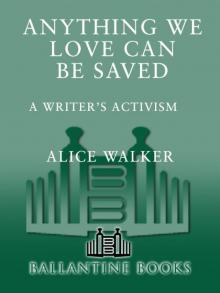 Anything We Love Can Be Saved
Anything We Love Can Be Saved The Color Purple
The Color Purple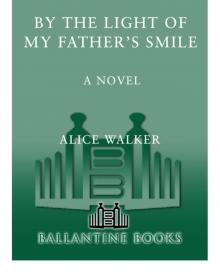 By the Light of My Father's Smile
By the Light of My Father's Smile The Third Life of Grange Copeland
The Third Life of Grange Copeland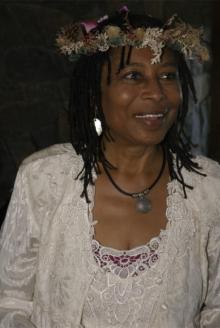 You Can't Keep a Good Woman Down
You Can't Keep a Good Woman Down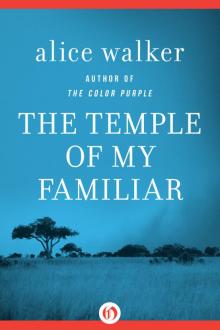 The Temple of My Familiar
The Temple of My Familiar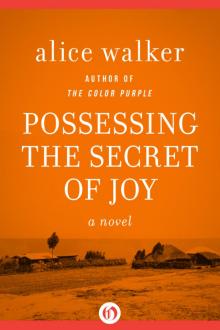 Possessing the Secret of Joy
Possessing the Secret of Joy We Are the Ones We Have Been Waiting For
We Are the Ones We Have Been Waiting For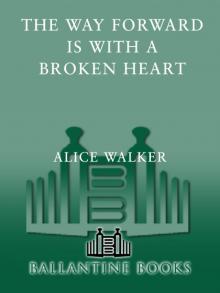 The Way Forward Is With a Broken Heart
The Way Forward Is With a Broken Heart Meridian
Meridian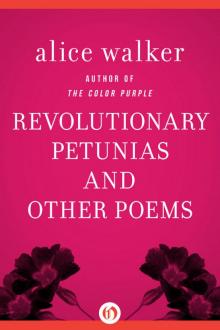 Revolutionary Petunias
Revolutionary Petunias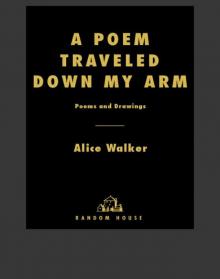 A Poem Traveled Down My Arm
A Poem Traveled Down My Arm Once
Once Horses Make a Landscape Look More Beautiful
Horses Make a Landscape Look More Beautiful Living by the Word
Living by the Word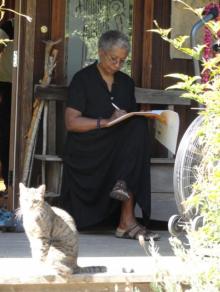 In Love and Trouble
In Love and Trouble The Color Purple Collection
The Color Purple Collection Now Is the Time to Open Your Heart
Now Is the Time to Open Your Heart Color Purple Collection
Color Purple Collection Taking the Arrow Out of the Heart
Taking the Arrow Out of the Heart The World Will Follow Joy
The World Will Follow Joy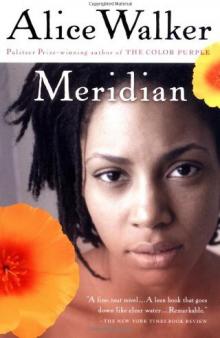 Meridian (1976)
Meridian (1976) Absolute Trust in the Goodness of the Earth
Absolute Trust in the Goodness of the Earth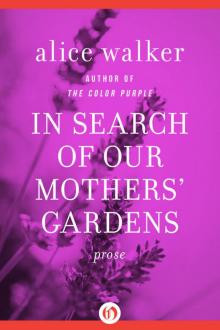 In Search of Our Mothers' Gardens
In Search of Our Mothers' Gardens